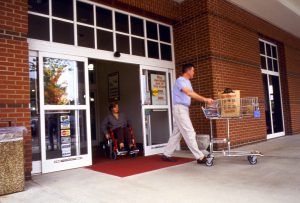Mini-Conference Recap: Universal Design for Learning: A Holistic Approach to Course Design

Dr. Lori Swinney describes Universal Design as the design and composition of an environment so that it can be accessed, understood, and used to the greatest extent possible by all people regardless of age, size, ability, or disability.
Expanding on the Universal Design principal, Universal Design for Learning (UDL) provides all students with an equal opportunity to learn. UDL is designed in flexible ways to meet the needs of individual learners, and is prepared with flexible means, methods, and materials to better meet the unique needs of every student. Dr. Swinney gives the participants a brief introduction to the neuroscience of the three ways that people learn while highlighting the three different learning networks of the brain. If you would like to learn more about the neuroscience go to minute marker 5:55 of the presentation.

Dr. Swinney identifies the three guiding principles of UDL as engagement, representation, and presentation.
The Why: Engagement The WHY of UDL is the Why behind what you are teaching. Often students (especially in intro coursework) do not understand or appreciate why what they are learning is important. Establishing the why behind what you teach will help your students see relevance and value in the material.
Offering opportunities for choice and autonomy is one way you can create a more meaningful and engaging learning environment.
The What: Representation The What of UDL, refers to how you present course materials. Utilizing a variety of ways to display and provide information is optimal for desired learning outcomes.
The How: Action and Expression The How of UDL refers to how your students are allowed to present, demonstrate, and express what they have learned in your course. Flexibility of deadlines and frequent opportunities to receive feedback both improve the learning experience.

During the second half of the presentation, Lorna Olsen dicusses the significance of Blackboard Ally for both students and faculty. Students are now able to receive alternative formats of learning materials while instructors receive guidance on how to improve accessibility of their course.
NDSU aims for 100% accessibility of their courses yet, improvement is the appropriate goal for any instructor. Ally offers scoring and feedback for every piece of content that you as an instructor place on Blackboard. For more information on where to start with Blackboard Ally go to minute marker 18:40 of the presentation. Additionally, there are great resources available through the OTL and IDC websites.
Mark your calendar for the 2022 Teaching and Learning Mini-Conference to be held May 24, 2022. We will see you there!
About the Author:

Holly DeVries is a graduate assistant in the Office of Teaching and Learning and is pursuing her M.Ed. in clinical mental health counseling at NDSU. She holds a Bachelor of Music degree from Minnesota State University Moorhead and has worked in the music industry on both East and West Coasts before returning to the Midwest. Holly is passionate about diversity and inclusion and is specifically interested in LGBTQ+ advocacy.